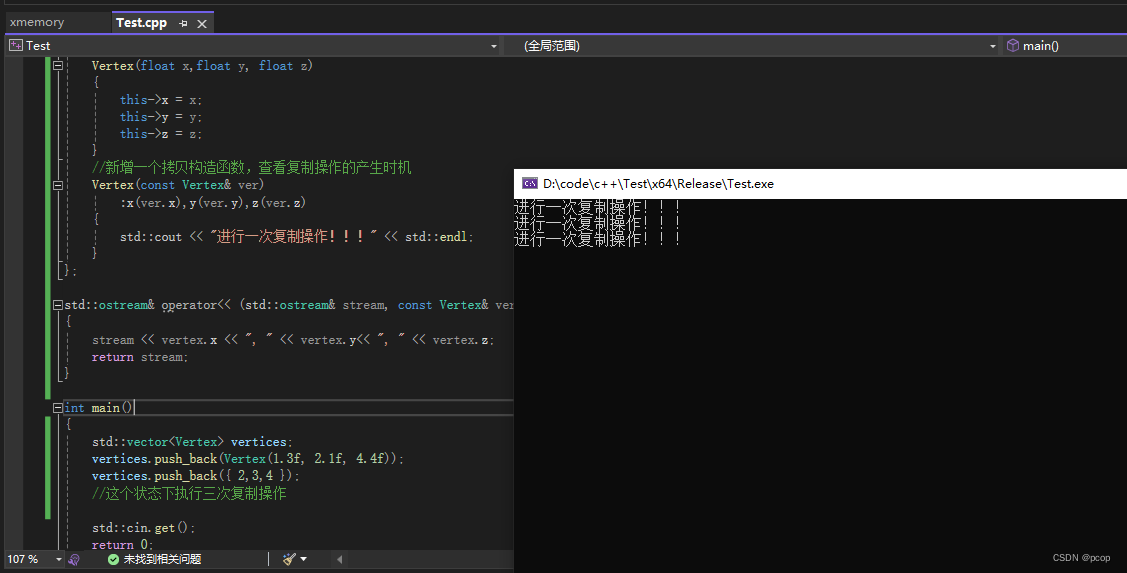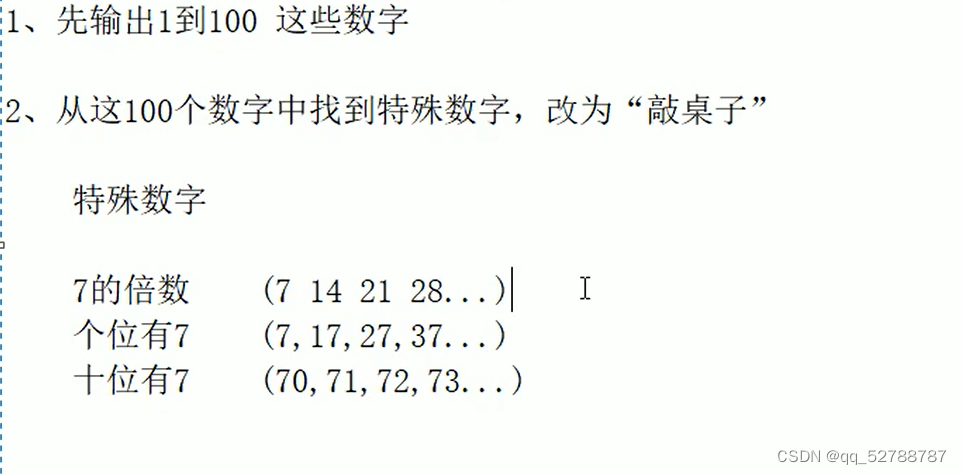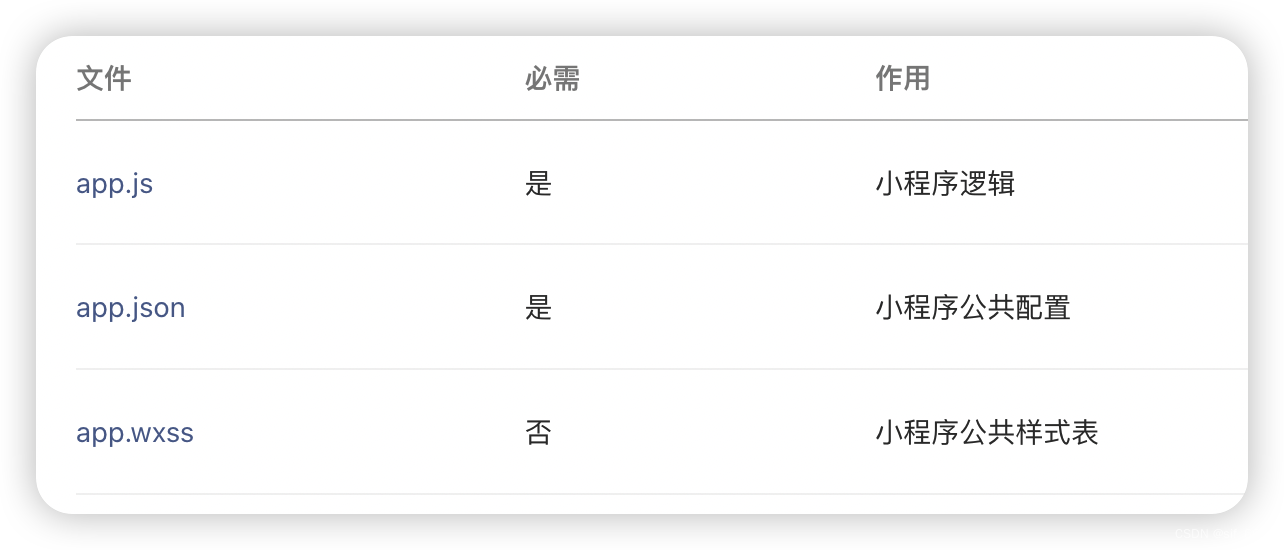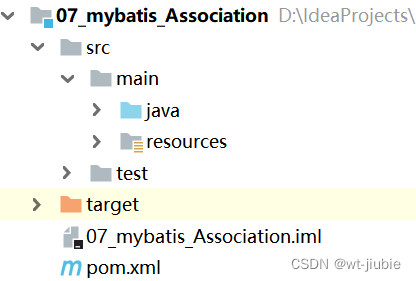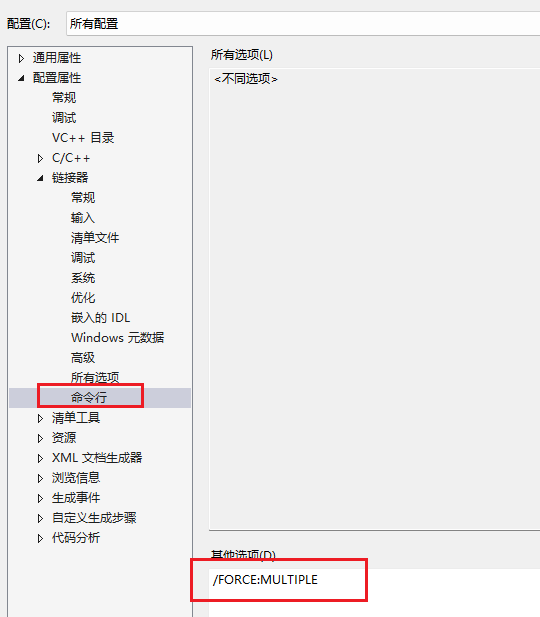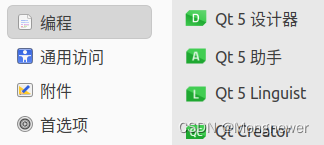模板
1. 模板的概念
模板就是建立通用的模具,大大提高复用性
模板的特点:
1. 模板不可以直接使用,它只是一个框架
2. 模板的通用并不是万能的
2. 函数模板
C++另一种编程思想称为泛型编程,主要利用的技术就是模板
C++提供两种模板机制:函数模板和类模板
2.1 函数模板语法
函数模板作用:建立一个通用函数,其函数返回值类型和形参类型可以不具体制定,用一个虚拟的类型来代替
语法:
template<typename T>
函数声明或定义解释:
template —— 声明创建模板
typename —— 表明其后面的符号是一种数据类型,可以用class代替
T —— 通用的数据类型,名称可以替换,通常为大写字母
#include <iostream>
using namespace std;
// 交换整型数据函数
void SwapInt(int& a, int& b)
{
int temp = a;
a = b;
b = temp;
}
// 交换浮点型数据函数
void SwapDouble(double& a, double& b)
{
double temp = a;
a = b;
b = temp;
}
// 利用模版提供通用的交换函数
template<typename T>
void mySwap(T& a, T& b)
{
T temp = a;
a = b;
b = temp;
}
void test()
{
int a1 = 10;
int b1 = 20;
double c1 = 1.1;
double d1 = 2.2;
int a2 = 10;
int b2 = 20;
double c2 = 1.1;
double d2 = 2.2;
cout << "交换前:a1 = " << a1 << endl;
cout << "交换前:b1 = " << b1 << endl;
SwapInt(a1, b1);
cout << "交换后:a1 = " << a1 << endl;
cout << "交换后:b1 = " << b1 << endl;
cout << "交换前:c1 = " << c1 << endl;
cout << "交换前:d1 = " << d1 << endl;
SwapDouble(c1, d1);
cout << "交换后:c1 = " << c1 << endl;
cout << "交换后:d1 = " << d1 << endl;
cout << "交换前:a2 = " << a2 << endl;
cout << "交换前:b2 = " << b2 << endl;
// 1. 自动类型推导
mySwap(a2, b2);
cout << "交换后:a2 = " << a2 << endl;
cout << "交换后:b2 = " << b2 << endl;
cout << "交换前:c2 = " << c2 << endl;
cout << "交换前:d2 = " << d2 << endl;
// 2. 显示指定类型
mySwap<double>(c2, d2);
cout << "交换后:c2 = " << c2 << endl;
cout << "交换后:d2 = " << d2 << endl;
}
int main(int argc, char* argv[])
{
test();
return 0;
}总结:
1. 函数模板利用关键字 template
2. 使用函数模板有两种方式:自动类型推导、显示指定类型
3. 模板的目的是为了提高复用性,将类型参数化
2.2 函数模板注意事项
注意事项:
1. 自动类型推导,必须推导出一致的数据类型T,才可以使用
2. 模板必须要确定出T的数据类型,才可以使用
2.3 函数模板案例
案例描述:
1. 利用函数模板封装一个排序的函数,可以对不同数据类型数据进行排序
2. 排序规则从小到大,排序算法为选择排序
3. 分别利用char数据和int数组进行测试
#include <iostream>
using namespace std;
// 交换函数模板
template<typename T>
void swapElement(T& a, T& b)
{
T temp = a;
a = b;
b = temp;
}
// 排序函数模板
template<typename T>
void arrSort(T arr[], int len)
{
for (int i = 0; i < len - 1; i++)
{
int min = i;
for (int j = i + 1; j < len; j++)
{
if (arr[min] > arr[j])
min = j;
}
if (min != i)
{
swapElement(arr[min], arr[i]);
}
}
}
// 输出函数模板
template<typename T>
void arrPrint(T arr[], int len)
{
for (int i = 0; i < len; i++)
{
if (arr[i] != '\0')
{
cout << arr[i] << " ";
}
}
cout << endl;
}
// 测试char数组
void test01()
{
char charArr[] = "cdefgab";
int charLen = sizeof(charArr) / sizeof(char);
arrSort(charArr, charLen);
arrPrint(charArr, charLen);
}
// 测试int数组
void test02()
{
int intArr[] = { 6,9,3,0,8,4,1,7,5,2 };
int charLen = sizeof(intArr) / sizeof(int);
arrSort(intArr, charLen);
arrPrint(intArr, charLen);
}
int main(int argc, char* argv[])
{
test01();
test02();
return 0;
}2.4 普通函数和函数模板的区别
普通函数与函数模板区别:
1. 普通函数调用时可以发生自动类型转换(隐式类型转换)
2. 函数模板调用时,如果利用自动类型推导,不会发生隐式类型转换
3. 如果利用显示指定类型的方式,可以发生隐式类型转换
#include <iostream>
using namespace std;
// 普通函数
int myAdd01(int a, int b)
{
return a + b;
}
// 函数模板
template<typename T>
T myAdd02(T a, T b)
{
return a + b;
}
void test()
{
int a = 10;
char b = 'b';
// 普通函数调用,输出108,将b转换为int类型,其值为b的ascll码值
cout << "a + b = " << myAdd01(a, b) << endl;
// 自动类型推导(报错)
// cout << "a + b = " << myAdd02(a, b) << endl;
// 显示指定类型:输出108
cout << "a + b = " << myAdd02<int>(a, b) << endl;
}
int main(int argc, char* argv[])
{
test();
return 0;
}总结:建议使用显示指定类型的方式,调用函数模板,因为可以自己确定通用类型T
2.5 普通函数与函数模板的调用规则
调用规则如下:
1. 如果函数模板和普通函数都可以调用,优先使用普通函数
2. 可以通过空模板参数列表来强制调用函数模板
3. 函数模板也可以发生重载
4. 如果函数模板可以产生更好的匹配,优先调用函数模板
#include <iostream>
using namespace std;
// 普通函数
void myPrint(int a, int b)
{
cout << "调用的是普通函数" << endl;
}
// 函数模板
template<typename T>
void myPrint(T a, T b)
{
cout << "调用的是模板1" << endl;
}
template<typename T>
void myPrint(T a, T b, T c)
{
cout << "调用的是模板2" << endl;
}
void test()
{
int a = 10;
int b = 20;
// 1. 优先调用普通函数
myPrint(a, b);
// 2. 通过空模板参数列表,强制调用函数模板
myPrint<>(a, b);
// 3. 函数模板也可以发生重载
myPrint(a, b, 100);
// 4. 如果函数模板可以产生更好的匹配,优先调用函数模板
char c1 = 'a';
char c2 = 'b';
// 模板1不用发生隐式类型转换,产生更好的匹配
myPrint(c1, c2);
}
int main(int argc, char* argv[])
{
test();
return 0;
}总结:既然提供了函数模板,最好就不要提供普通函数,否则容易出现二义性
2.6 模板的局限性
局限性:模版的通用性并不是万能的
例如:
template<typename T>
void f(T a, T b)
{
a = b;
}在上述代码中提供的赋值操作,如果传入的a和b是一个数组,就无法实现了
例如:
template<typename T>
void func(T a, T b)
{
if(a>b){...}
}在上述代码中,如果T的数据类型传入的是想Person这样的自定义数据类型,也无法正常运行
因此C++为了解决这种问题,提供模板的重载,可以为这些特定的类型提供具体化的模板
#include <iostream>
#include <string>
using namespace std;
class Person
{
public:
Person(string name, int age)
{
this->m_Name = name;
this->m_Age = age;
}
string m_Name;
int m_Age;
};
// 对比两个数据是否相等函数
template<typename T>
bool myCompare(T& a, T& b)
{
if (a == b)
{
return true;
}
else
{
return false;
}
}
void test01()
{
int a = 10;
int b = 20;
bool res = myCompare(a, b);
if (res == true)
{
cout << "a == b" << endl;
}
else
{
cout << "a != b" << endl;
}
}
// 利用具体化Person的版本实现代码,具体化优先调用
template<> bool myCompare(Person& p1, Person& p2)
{
if (p1.m_Name == p2.m_Name && p1.m_Age == p2.m_Age)
{
return true;
}
else
{
return false;
}
}
void test02()
{
Person p1("tom", 10);
Person p2("tom", 10);
bool res = myCompare(p1, p2);
if (res == true)
{
cout << "a == b" << endl;
}
else
{
cout << "a != b" << endl;
}
}
int main(int argc, char* argv[])
{
test01();
test02();
return 0;
}总结:
1. 利用具体化的模板,可以解决自定义类型的通用化
2. 学习模板并不是为了写模板,而是在STL中能够运用系统提供的模板
3. 类模板
3.1 类模板语法
类模板作用:建立一个通用类,类中的成员数据类型可以是不具体制定的,用一个虚拟的类型来代表
语法:
template<class T>
类解释:
template —— 声明创建模板
class —— 表面其后面的符号是一种数据类型,可以用typename代替
T —— 通用的数据类型,名称可以替换,通常为大写字母
#include <iostream>
#include <string>
using namespace std;
template<class NameType, class AgeType>
class Person
{
public:
NameType m_Name;
AgeType m_Age;
Person(NameType name, AgeType age)
{
this->m_Name = name;
this->m_Age = age;
}
void showPerson()
{
cout << "姓名:" << this->m_Name << endl;
cout << "年龄:" << this->m_Age << endl;
}
};
void test()
{
Person<string, int> p("tom", 10);
p.showPerson();
}
int main(int argc, char* argv[])
{
test();
return 0;
}3.2 类模板和函数模板的区别
类模板与函数模板的区别主要有两点:
1. 类模板在模板参数列表中可以有默认参数
2. 类模板没有自动类型推导的使用方式
#include <iostream>
#include <string>
using namespace std;
// 1. 类模板在模板参数列表中可以有默认参数
template<class NameType, class AgeType = int>
class Person
{
public:
NameType m_Name;
AgeType m_Age;
Person(NameType name, AgeType age)
{
this->m_Name = name;
this->m_Age = age;
}
void showPerson()
{
cout << "姓名:" << this->m_Name << endl;
cout << "年龄:" << this->m_Age << endl;
}
};
void test()
{
// 2. 类模板没有自动类型推导使用方式
//Person p("tom", 10);
Person<string>p("tom", 10);
p.showPerson();
}
int main(int argc, char* argv[])
{
test();
return 0;
}3.3 类模板中成员函数创建时机
类模板中成员函数和普通类中成员函数创建时机是由区别的
普通类中的成员函数一开始就创建
类模板中的成员函数在调用时才创建
3.4 类模板对象做函数参数
类模板实例化出的对象,向函数传参的方式
一共有三种传入方式:
1. 指定传入的类型 — 直接显示对象的数据类型
2. 参数模板化 — 将对象中的参数变为模板进行传递
3. 整个类模板化 — 将这个对象类型模板化进行传递
#include <iostream>
#include <string>
using namespace std;
template<class NameType, class AgeType>
class Person
{
public:
NameType m_Name;
AgeType m_Age;
Person(NameType name, AgeType age)
{
this->m_Name = name;
this->m_Age = age;
}
void showPerson()
{
cout << "姓名:" << this->m_Name << endl;
cout << "年龄:" << this->m_Age << endl;
}
};
// 1. 指定传入类型
void printPerson01(Person<string, int>& p)
{
p.showPerson();
}
void test01()
{
Person<string, int>p("孙悟空",100);
printPerson01(p);
}
// 2. 参数模板化
template<typename NameType, typename AgeType>
void printPerson02(Person<NameType, AgeType>& p)
{
p.showPerson();
// 查看推到出来的类型
cout << "NameType的类型:" << typeid(NameType).name() << endl;
cout << "AgeType的类型:" << typeid(AgeType).name() << endl;
}
void test02()
{
Person<string, int>p("猪八戒", 90);
printPerson02(p);
}
// 3. 整个类模板化
template<typename T>
void printPerson03(T& p)
{
p.showPerson();
// 查看推到出来的类型
cout << "T的类型:" << typeid(T).name() << endl;
}
void test03()
{
Person<string, int>p("唐三藏", 45);
printPerson03(p);
}
int main(int argc, char* agrv[])
{
test01();
test02();
test03();
return 0;
}总结:
1. 通过类模板创建的对象,可以有三种方式向函数中进行传参
2. 使用比较广泛的是第一种:指定传入的类型
3.5 类模板与继承
当类模板碰到继承时,需要注意以下几点:
1. 当子类继承的父类是一个类模板时,子类在声明的时候,需要制定出父类中T的类型
2. 如果不指定,编译器无法给子类分配内存
3. 如果想灵活指定出父类中T的类型,子类也需要变为类模板
#include <iostream>
#include <string>
using namespace std;
template<class T1>
class Base
{
public:
T1 m_BaseNum;
};
//class Son :public Base 错误,必须要知道父类中T1的类型,才可以继承给子类
class Son1 :public Base<int>{};
// 如果想灵活指定父类中T1的类型,子类也需要变类模板
template<class T1, class T2>
class Son2 :public Base<T1>
{
public:
T2 m_Son2Num;
Son2()
{
cout << "Base中T1的数据类型为:" << typeid(T1).name() << endl;
cout << "Son2中T2的数据类型为:" << typeid(T2).name() << endl;
}
};
int main(int argc, char* argv[])
{
Son2<string, int>s;
return 0;
}总结:如果父类是类模板,子类需要指定出父类中T的数据类型
3.6 类模板成员函数的类外实现
#include <iostream>
#include <string>
using namespace std;
template<class NameType, class AgeType>
class Person
{
public:
NameType m_Name;
AgeType m_Age;
// 类内声明
Person(NameType name, AgeType age);
void showPerson();
};
// 构造函数的类外实现
template<class NameType, class AgeType>
Person<NameType, AgeType>::Person(NameType name, AgeType age)
{
this->m_Name = name;
this->m_Age = age;
}
// 成员函数的类外实现
template<class NameType, class AgeType>
void Person<NameType, AgeType>::showPerson()
{
cout << "姓名:" << this->m_Name << endl;
cout << "年龄:" << this->m_Age << endl;
}
void test()
{
Person<string, int>p("tom", 18);
p.showPerson();
}
int main(int argc, char* argv[])
{
test();
return 0;
}总结:类模板中成员函数类外实现时,需要加上模板参数列表
3.7 类模板分文件编写
问题:类模板中成员函数创建时机是在调用阶段,导致分文件编写时链接不到
解决:1. 直接包含.cpp源文件
2. 将声明(.h)和实现(.cpp)写到同一文件中,并更改后缀名为.hpp,hpp是约定的名称,并不是强制
1. 在头文件中创建XXX.h,在源文件中创建XXX.cpp
Person.h
#pragma once
#include <iostream>
#include <string>
using namespace std;
template<class NameType, class AgeType>
class Person
{
public:
NameType m_Name;
AgeType m_Age;
// 类内声明
Person(NameType name, AgeType age);
void showPerson();
};
Person.cpp
#include "Person.h"
// 构造函数的类外实现
template<class NameType, class AgeType>
Person<NameType, AgeType>::Person(NameType name, AgeType age)
{
this->m_Name = name;
this->m_Age = age;
}
// 成员函数的类外实现
template<class NameType, class AgeType>
void Person<NameType, AgeType>::showPerson()
{
cout << "姓名:" << this->m_Name << endl;
cout << "年龄:" << this->m_Age << endl;
}main.cpp
#include <iostream>
#include <string>
#include "Person.cpp"
using namespace std;
void test()
{
Person<string, int>p("tom", 18);
p.showPerson();
}
int main(int argc, char* argv[])
{
test();
return 0;
}2. 在头文件中创建XXX.hpp
Person.hpp
#pragma once
#include <iostream>
#include <string>
using namespace std;
template<class NameType, class AgeType>
class Person
{
public:
NameType m_Name;
AgeType m_Age;
// 类内声明
Person(NameType name, AgeType age);
void showPerson();
};
// 构造函数的类外实现
template<class NameType, class AgeType>
Person<NameType, AgeType>::Person(NameType name, AgeType age)
{
this->m_Name = name;
this->m_Age = age;
}
// 成员函数的类外实现
template<class NameType, class AgeType>
void Person<NameType, AgeType>::showPerson()
{
cout << "姓名:" << this->m_Name << endl;
cout << "年龄:" << this->m_Age << endl;
}main.cpp
#include <iostream>
#include <string>
#include "Person.hpp"
using namespace std;
void test()
{
Person<string, int>p("tom", 18);
p.showPerson();
}
int main(int argc, char* argv[])
{
test();
return 0;
}总结:主流的解决方式是第二种,将类模板成员函数写到一起,并将后缀名改为.hpp
3.8 类模板与友元
全局函数类内实现 — 直接在类内声明友元即可
全局函数类外实现 — 需要提前让编译器知道全局函数的存在
全局函数类内实现:
#include <iostream>
#include <string>
using namespace std;
template<class NameType, class AgeType>
class Person
{
friend void showPerson(Person<NameType, AgeType> p)
{
cout << "姓名:" << p.m_Name << endl;
cout << "年龄:" << p.m_Age << endl;
}
public:
Person(NameType name, AgeType age)
{
this->m_Name = name;
this->m_Age = age;
}
private:
NameType m_Name;
AgeType m_Age;
};
void test()
{
Person<string, int>p("tom", 18);
showPerson(p);
}
int main(int argc, char* argv[])
{
test();
return 0;
}全局函数类外实现:
#include <iostream>
#include <string>
using namespace std;
// 提前让编译器知道Person类的存在,因为把全局函数的类外实现放在在前面
// 全局函数类外实现用到了Person
template<class NameType, class AgeType>
class Person;
// 全局函数类外实现
template<class NameType, class AgeType>
void showPerson(Person<NameType, AgeType> p)
{
cout << "姓名:" << p.m_Name << endl;
cout << "年龄:" << p.m_Age << endl;
}
template<class NameType, class AgeType>
class Person
{
// 全局函数类内声明
// 加空模板参数列表,因为类外实现变成了函数模板
// 如果全局函数是类外实现,需要让编译器提前知道这个函数的存在
friend void showPerson<>(Person<NameType, AgeType> p);
public:
Person(NameType name, AgeType age)
{
this->m_Name = name;
this->m_Age = age;
}
private:
NameType m_Name;
AgeType m_Age;
};
void test()
{
Person<string, int>p("tom", 18);
showPerson(p);
}
int main(int argc, char* argv[])
{
test();
return 0;
}总结:建议全局函数做类内实现,用法简单,而且编译器可以直接识别
3.9 类模板案例
案例分析:实现一个通用的数组类,需求如下:
1. 可以对内置数据类型以及自定义数据类型的数据进行存储
2. 将数组中的数据存储到堆区
3. 构造函数中可以传入数组的容量
4. 提供对应的拷贝构造函数以及operator=防止浅拷贝问题
5. 提供尾插法和尾删法对数组中的数据进行增加和删除
6. 可以通过下标的方式访问数组中的元素
7. 可以获取数组中当前元素的个数和数组的容量
MyArray.hpp
#pragma once
#include <iostream>
using namespace std;
template<class T>
class MyArray
{
public:
// 有参构造
MyArray(int capacity)
{
this->m_Capacity = capacity;
this->m_Size = 0;
this->pAddress = new T[this->m_Capacity];
}
// 拷贝构造函数
MyArray(const MyArray& arr)
{
this->m_Capacity = arr.m_Capacity;
this->m_Size = arr.m_Size;
// 深拷贝
this->pAddress = new T[arr->pAddress];
// 将arr中的数据都拷贝过来
for(int i=0;i<this->m_Size;i++)
{
this->pAddress[i] = arr.pAddress[i];
}
}
// operator= 防止浅拷贝问题
MyArray& operator=(const MyArray& arr)
{
// 先判断原来堆区是否有数据,如果有先释放
if (this->pAddress != NULL)
{
delete[] this->pAddress;
this->pAddress = NULL;
this->m_Capacity = 0;
this->m_Size = 0;
}
// 深拷贝
this->m_Capacity = arr.m_Capacity;
this->m_Size = arr.m_Size;
this->pAddress = new T[arr->pAddress];
// 将arr中的数据都拷贝过来
for (int i = 0; i < this->m_Size; i++)
{
this->pAddress[i] = arr.pAddress[i];
}
return *this;
}
// 尾插法
void Push_Back(const T& val)
{
// 判断容量是否等于大小
if (this->m_Capacity == this->m_Size)
{
return;
}
this->pAddress[this->m_Size] = val;
this->m_Size++;
}
// 尾删法
void Pop_Back()
{
// 让用户访问不到最后一个元素,即为尾删,逻辑删除
if (this->m_Size == 0)
{
return;
}
this->m_Size--;
}
// 通过下标的方式访问数组中的元素
T& operator[](int index)
{
return this->pAddress[index];
}
// 返回数组容量
int getCapacity()
{
return this->m_Capacity;
}
//返回数组大小
int getSize()
{
return this->m_Size;
}
// 析构函数
~MyArray()
{
if (this->pAddress != NULL)
{
delete[] this->pAddress;
this->pAddress = NULL;
}
}
private:
T* pAddress; // 指针指向堆区开辟的真实数据
int m_Capacity; // 数组容量
int m_Size; // 数组大小
};
main.cpp
#include <iostream>
#include <string>
#include "MyArray.hpp"
using namespace std;
class Person
{
public:
Person(){}
Person(string name, int age)
{
this->m_Name = name;
this->m_Age = age;
}
string m_Name;
int m_Age;
};
void printIntArray(MyArray <int>& arr)
{
for (int i = 0; i < arr.getSize(); i++)
{
cout << arr[i] << " ";
}
cout << endl;
}
void printPersonArray(MyArray<Person>& arr)
{
for (int i = 0; i < arr.getSize(); i++)
{
cout << "姓名:" << arr[i].m_Name << "\t年龄:" << arr[i].m_Age << endl;
}
}
// 测试内置数据类型
void test01()
{
MyArray <int>arr1(20);
for (int i = 0; i < 10; i++)
{
// 利用尾插法向数组内插入数据
arr1.Push_Back(i);
}
cout << "arr1的内容为:" << endl;
printIntArray(arr1);
cout << "arr1的大小为:" << arr1.getSize() << endl;
cout << "arr1的容量为:" << arr1.getCapacity() << endl;
// 利用尾删法删除数组尾部的数据
arr1.Pop_Back();
cout << "正在删除......" << endl;
cout << "arr1的内容为:" << endl;
printIntArray(arr1);
cout << "arr1的大小为:" << arr1.getSize() << endl;
cout << "arr1的容量为:" << arr1.getCapacity() << endl;
}
// 测试自定义数据类型
void test02()
{
MyArray<Person> arr(20);
Person p1("韩信", 20);
Person p2("赵云", 18);
Person p3("刘邦", 30);
Person p4("孙悟空", 99);
Person p5("妲己", 15);
Person p6("安琪拉", 13);
// 将数据插入到数组中
arr.Push_Back(p1);
arr.Push_Back(p2);
arr.Push_Back(p3);
arr.Push_Back(p4);
arr.Push_Back(p5);
arr.Push_Back(p6);
// 打印数组
cout << "arr的内容为:" << endl;
printPersonArray(arr);
// 输出大小
cout << "arr的大小为:" << arr.getSize() << endl;
// 输出容量
cout << "arr的容量为:" << arr.getCapacity() << endl;
// 利用尾删法删除数组尾部的数据
arr.Pop_Back();
cout << "正在删除......" << endl;
cout << "arr的内容为:" << endl;
printPersonArray(arr);
cout << "arr的大小为:" << arr.getSize() << endl;
cout << "arr的容量为:" << arr.getCapacity() << endl;
}
int main(int argc, char* argv[])
{
test01();
test02();
return 0;
}
